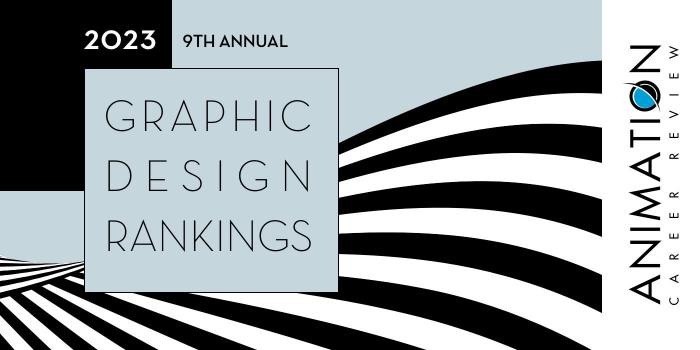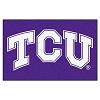

What are the top Texas graphic design schools for 2023?
| Ranking | School | City |
|---|---|---|
| 1 | University of Texas at Austin | Austin |
| 2 | University of North Texas | Denton |
| 3 | Texas State University | San Marcos |
| 4 | University of Houston | Houston |
| 5 | Texas Tech University | Lubbock |
| 6 | Baylor University | Waco |
| 7 | Texas Christian University | Fort Worth |
| 8 | Sam Houston State University | Huntsville |
| 9 | University of Texas at Arlington | Arlington |
| 10 | Texas A&M University | College Station |
Our 2023 ranking of the top 10 graphic design school programs in Texas. For an explanation of the ranking criteria, click here.

The College of Fine Arts at the University of Texas at Austin (UT Austin) houses the School of Design and Creative Technologies. Within the School is the Design Department. Housed in the Doty Fine Arts Building (DFA) and the Art Building (ART), the Department has several pathways to study Graphic Design. At the undergraduate level, students have the option to enroll in the Design BA or BFA Program. Students seeking an advanced degree may enroll in the Design MFA Program.
For students who prefer a shorter program, The Center for Professional Education at UT Austin has a Graphic Design Certificate Program that may be completed 100% online. Over 13 sessions lasting three months, Certificate students will master industry software such as After Effects, Photoshop, In Design, and Illustrator. The program also explores design practices and the production of static and motion graphic designs.
At all degree levels, design students will explore graphic design, interaction design, and industrial design. All coursework is project-based and industry oriented, with the opportunity to create a specialization through courses across five areas: Graphic Design, Interaction Design, Industrial Design, Design History, and Design Research. Students in all UT Austin Design Programs also have plenty of opportunities to engage in experiential learning through the school’s internship and study abroad programs.
The Design BA at UT Austin combines liberal arts courses with courses in design techniques, aesthetics, theory, research methos, and history. While BA students will take fewer upper division design courses than BFA students will, the program offers the opportunity to explore other areas in additional departments across the university. Course examples for this 120 credit hour program include Sketching, History of Design, Introduction to 2D and 3D, Interaction Design, Typography, Design Research and Images in Communication. Internship and study abroad opportunities are also part of the program. Both are optional.
The Design BFA is a pre-professional degree consisting of 120 credit hours. Around two-thirds of the courses for this program are in Design and related coursework. Course examples include Identity Systems, Typography I-III, Design and Social Environment, and Industrial Design. Students in the Design BFA Program will complete one or more paid internships along with a capstone design project that will be presented in UT Austin’s Annual Public Exhibition. Students have interned at places such as Apple, Google, Samsung, Dell, IBM, and EA Games.
The University of Texas at Austin Design MFA is a 60 credit hour program designed for exceptional students with solid design skills. The program consists of seminars, studios, electives, and a thesis project. Design MFA students have 24/7 access to shared studio spaces and as well as the Design, Computer, Materials, and Digital Fabrication Labs, the Wood Shop, Visual Arts Center, and Fine Arts Library, and the Harry Ransom Center and The Foundry.
Graduates of the Design Programs at UT Austin are Graphic Designers, Brand Designers, UI/UX Designers, Book Designers, Interaction Designers, Art Directors, Product Designers, Project Managers, Design Strategists, Visual Designers, Industrial Designers, an Entrepreneurs, among others. UT Austin Design graduates work at Walt Disney Imagineering, Razorfish, Deloitte, Meta, The New York Times, H-E-B Digital, Publicis Sapient, Serenity Forge, Droga5, Double A Labs, Gensler, and frog design (part of Capgemini Invent).
Founded in 1883, University of Texas at Austin serves approximately 52,385 students, making it one of the largest universities in Texas. UT Austin provides more than 155 undergraduate degree programs with 170+ fields of study, 139 graduate degree programs, and nearly 100 doctoral programs across 18 colleges and schools. University of Texas at Austin is accredited by the Southern Association of Colleges and Schools Commission on Colleges (SACSCOC).

The College of Visual Arts and Design (CVAD) at the University of North Texas (UNT) is home to the only PhD in Art Education in the state of Texas. CVAD also houses the Design Department, which has several paths to study Graphic or Communication Design. At the undergraduate level, CVAD has a Communication Design BFA with two tracks: Graphic Design and User-Experience Design (UX Design).
Both tracks consist of studio coursework, with Graphic Design students taking additional requirements such as Foundations for Communication Design, Image-Making and Color Theory, and Typography I. UX Design students will take additional requirements such as Foundations of User-Centered Design, Contextual Research Methods, and Typographic Systems.
Other course examples across Tracks include Cause-Based Design, Image Making & Color Theory, Communication Design Studio, Interaction Design, Data Visualization & the Design of Information, Advanced Product Design in UX Design, Prototyping & User Testing, Planning and Developing Interactive Systems, Art History Survey I-III, and GD Advanced Campaigns.
Students in both Tracks may add a minor such as Printmaking, New Media Art, Photography, or Art History. All UNT Communication Design students will complete a portfolio of their best work to graduate. Program alumni are prepared to work in advertising, publishing, entertainment, manufacturing, and computer systems design. University of North Texas CVAD graduates also qualify for jobs in government agencies, colleges and universities, nonprofit organizations, and museums.
Established in 1890 and employing more than 4,600 faculty and staff members, University of North Texas is one of the largest employers in the City of Denton, Texas. The school serves approximately 44,530 students, making it one of the top 10 largest universities in Texas and one of the largest in the U.S. Students at UNT have access to more than 200 degree options across 14 colleges and schools. University of North Texas is accredited by the Southern Association of Colleges and Schools Commission on Colleges (SACSCOC) and it is an accredited institutional member of the National Association of Schools of Art and Design (NASAD).

The College of Fine Arts & Communication at Texas State University (Texas State) is home to the School of Art and Design, which houses the Communication Design Program (ComDes). Degree options include the BFA and MFA in ComDes. The 120 credit hour ComDes BFA provides mentoring, meetups, and internship opportunities through the Texas State’s relationships with local and national businesses. Students have also interned at companies in Europe.
Courses for the program are taught in a studio environment with access to the Mitte Complex, which houses state-of-the-art production facilities and equipment. Coursework explores brand experience, sustainable packaging, typography, corporate identity, environmental graphics, human-centered design, interactive design, art direction, and design research. Specific course examples include Branding Systems, Expanded Media, Trademark Design, Interactive Media, Introduction to Printmaking: Intaglio and Lithography, and Typography. The ComDes BFA Program culminates with a Senior Portfolio Presentation and Self-Promotion Capstone.
Before graduating from the program, many ComDes students have already earned publishing credits in journals such as PRINT, Communication Arts, Graphis New Talent Annual, Step Inside Design, CMYK, and Logo Lounge. Students in the program have also received recognition competitions such as the Austin Addy Awards, the San Antonio Addy Awards, AIGA Flux, Creative Summit, the American Advertising Federation Awards, Art The National Show, Director's Club of Houston, and The One Show.
Graduates of the Texas State University ComDes BFA Program have been placed at companies such as DDB, Google, Microsoft, Disney, Verizon, IBM, Spotify, Indeed, Vrbo, H-E-B Digital, GSD&M, USAA, and Helms Workshop.
The Texas State University ComDes MFA is a terminal degree that can be completed online with just one campus residency each year. During the residency, students will participate in workshops, critiques, and visiting designer lectures. Graduate assistantships are also offered in the School of Art and Design, and allow students to gain teaching experience through the ComDes BFA Program. Graduate assistantships are paid positions that require 20 hours of work per week.
The Texas State MFA/CD consists of 60 credit hours including 18 credit hours of core curriculum, 30 credit hours of prescribed communication design studio electives, six credit hours of free electives, and six credit hours of thesis. Courses explore digital design, visual communication, typography, and design history. Course examples include The Experimental Book, Generative Design, Experience Design, Imaging, Alternative Printing Methods, Kinetic Typography, Design for Motion, Corporate Identity Systems, Professional Practice, Design Futures, Entrepreneurial Design, Exhibitions, Corporate Marketing Materials, and Research Through Making.
In the Professional Practice course, MFA students will work with regional and national advertising agencies, graphic design firms, and digital media studios to gain professional experience.
Potential careers for graduates of the Texas State University MFA/CD Program include Senior Graphic Designer, Design Manager, Visual Designer, Creative Director, Typographer, Senior Interaction Designer, UI/UX Designer, Art Director, and Professor.
Lyndon B. Johnson is the Texas State University’s most famous alumni, and the only president to graduate from a Texas college. Established in 1899 as a teacher’s college known as Southwest Texas Normal School, the school serves approximately 38,170 students enrolled in more than 200 bachelor’s, master’s, and doctoral degree programs. Located on the banks of the San Marcos River, Texas State University has been a part of the Texas State University System since 1911 and it is accredited by the Southern Association of Colleges and Schools Commission on Colleges (SACSCOC).

Kathrine G. McGovern College of the Arts (KGMCA) at University of Houston (UH) houses the School of Art, which has two paths to study Graphic Design: a BFA in Graphic Design and Studio Art MFA with a Graphic Design Concentration. Program features for the Graphic Design BFA include the option to add the Graphic Communications Technology Minor; learning and networking opportunities through visiting artists and speaker events; participation in workshops, site-specific projects, lectures, and critiques; and access to internship opportunities.
Consisting of 18 semester hours, the Graphic Communications Technology Minor explores the technology used to produce print media. Course examples include Graphic Communication Output Lab, Graphics for Digital Media, Information Technology Applications for Digital Media, and Page Layout and Design. The UH Minor is part of the College of Technology’s Department of Information and Logistics Technology.
All BFA Program students will take courses such as Colors, Materials and Methods, Intermediate Graphic Design, Introduction to Typography, History of Graphic Design, Art History, and Fundamentals of Graphic Design. Examples of recommended courses include Graphic Design Software, Digital Tools, Rendering and Sketching, Digital Fabrication, Printmaking, Photography/Digital Media, and Video Art.
The Graphic Design BFA Program at University of Houston culminates with the Senior Exhibition, which allows students to showcase their best work.
The UH Studio Art MFA with a Graphic Design Concentration consists of 60 semester hours including 24 hours in related arts, 18 hours in the concentration, nine hours in art history, and nine hours in graduate seminars. Course examples include Graphic Design Studio, Interdisciplinary Practice and Emerging Forms Studio, Art Seminar, and Writing Seminar. Upon completion of all coursework and projects for the program, MFA students will present their work in a Thesis Exhibition at University of Houston’s Blaffer Art Museum.
In addition to Graphic Designer, graduates of the Graphic Design Programs at UH are prepared to pursue positions such as Creative Director, User experience (UX) Designer, User interface (UI) Designer, Brand Identify Developer, Production Artist, Brand Manager, Product Developer, Art Director, Marketing Specialist, and Multimedia Artist.
Founded in 1927 and serving 46,700 students, University of Houston is the largest public research university in Houston and the third largest university in Texas. The school offers 276 degree programs across 16 colleges and schools, and an interdisciplinary Honors College. University of Houston is Accredited by the Southern Association of Colleges and Schools Commission on College (SACSCOC).

Texas Tech University (TTU) is home to J.T. & Margaret Talkington College of Visual & Performing Arts (TCVPA), which houses the School of Art. Within the school is an Art BFA Program with a Graphic Design Specialization. Program features include collaborative projects, workshops, guest speakers, and internship opportunities. Students also have access to state-of-the-art labs, studios, and equipment, and a study abroad program that provides opportunities to work and learn in more than 70 countries.
The Graphic Design BFA at TTU is a limited access program that explores branding, emerging technologies, interactive design, publication design, and identity design. Consisting of 123 credit hours, the program includes the TTU Core Curriculum, 42-45 credit hours of Graphic Design courses, and 21-24 credit hours of studio art and art history electives. Major course examples include 2D and 3D Design, Publication, Visual Systems, Graphic Design Process, Symbols, Computer Design Methods, Typography, Design in the Community, and Web Media.
During the final semester of the TTU BFA Program, students will complete the Portfolio Development and Professional Practice courses, which prepare students for entry into the job market through mock interviews, self-promotion strategies, and more.
Graduates of the Graphic Design Program at Texas Tech University are Brand Managers, Visual Communication Designers, UX/UI Designers, Packaging Designers, Freelance Designers, Exhibit Designers, Creative Directors, and Web Designers. They for advertising agencies, web and interactive design studios, social media and marketing firms, magazines, publishing companies, museums, non-profit organizations, and on teams within design departments at companies across all industries.
TTU alumni have worked with The New York Times, Southwest Airlines, IBM, Fidelity, Paul Mitchell, Conde Nast Traveler, Dwell Magazine, H-E-B, Nike, Wired, AT&T, JC Penny, Fossil, M.A.C. Cosmetics, Southwest Airlines, Refinery 29, and Texas Monthly.
Texas Tech University opened in 1925 as Texas Technological College (TTC) with six buildings and 914 students. Today, TTU serves approximately 40, 655 students, making it the largest comprehensive higher education institution in the western two-thirds of the State of Texas. Texas Tech University offers more than 150 academic programs in 13 colleges and through the eLearning Division. Texas Tech University is accredited by the Southern Association of Colleges and Schools Commission on Colleges (SACSCOC).

The College of Arts & Sciences at Baylor University (Baylor) houses 25 academic departments and eight academic centers and institutes, making it the school’s largest academic division. Established in 1919, the College is also one of the school’s oldest units. Housed in the Lewis Art Building, Art and Art History is one of the Departments of the College of Arts & Sciences. Housed in the Lewis Art Building, the Department houses smart classrooms, computer labs for graphic design and photography, darkrooms, and state-of-the-art studios drawing, painting, printmaking, and more. Students in the Baylor Studio Art BFA and BA Programs here have access to all Department facilities.
The Studio Art BFA and BA allow students to focus in Graphic Design. Course examples for the program include Typography, Package Design, Conceptual Development, Identity Design, Digital Media for Graphic Design, Publication Design, Illustration, Studio Topics in Graphic Design, and Web Design.
Studio Art students will also complete the Internship in Studio Art, and a Portfolio Preparation course where they will develop a Graphic Design Portfolio of their best work. Portfolio Preparation also covers interviewing, presentation skills, and job search strategies.
Graduates work for advertising agencies, publishing firms, creative agencies, design studios, publishers, newspapers and magazines, public relations firms, marketing companies, web design firms, and museums. Some graduates have launched their own design studios and advertising agencies.
Chartered in 1845, Baylor University is the oldest continually operating university in Texas. Serving approximately to 19,850 students, Baylor offers more than 250 degree programs across 12 academic divisions. Baylor University is accredited by the Southern Association of Colleges and Schools Commission on Colleges (SACSCOC).

The College of Fine Arts at Texas Christian University (TCU or Texas Christian) houses the Department of Design, home to the Graphic Design Program. A major component of this BFA program is the TCU internship requirement during the third year of study. The Design Internship provides the opportunity for students to work at ad agencies or design studios in the Dallas-Fort Worth metro area, anywhere in the U.S., and overseas. TCU Design students have completed internships in places such as New York, Chicago, Miami, Los Angeles Kansas City, Austin, St. Louis, Houston, Peru, England, Panama, and Taiwan. Many Design students receive offers to remain with the studio or agency part-time during their senior year, while others have been recruited for full-time positions.
Consisting of 124 credit hours (120 beginning Fall 2024), the Graphic Design BFA Program at Texas Christian University explores advertising, packaging, branding, corporate identity, web and interactive media, typography, and publications. Students in the program will complete 51 credit hours in Graphic Design. Course examples include Advanced Design, Typography, Package Design, Corporate Identity, Advertising Design, Computer Applications to Graphic Design, 2D Design, Creative Practice, and Publication Design. Portfolio and Marketing, Senior Thesis in Visual Communication, and The Digital Portfolio courses are also part of the program.
Graduates of the Graphic Design Program at Texas Christian University have enjoyed a 100% employment rate over the past four years. Program alumni are Graphic Designers, Creative Designers, and Art Directors at design studios, advertising agencies, and more in just about every major city in Texas, across the U.S., and abroad. They work in New York, Los Angeles, Miami, San Francisco, Chicago, Seattle, London, Peru, Germany, Guatemala, Panama, and Nicaragua with companies such as Warren Douglas Advertising, Twilio, Pentagram, Loyalkaspar (LK), Deep Focus, and Pace Communications.
Established in 1873 as one of the Southwest’s earliest coed universities, Texas Christian University serves approximately 12,275 students enrolled in more than 200 degree programs across 10 colleges and schools. With more than 60 faith traditions represented, TCU students come from 50 states and 76 nations. Texas Christian University is accredited by the Southern Association of Colleges and Schools Commission on Colleges (SACSCOC).

The College of Arts and Media at Sam Houston State University (SHSU) houses the Department of Art. Within the Department is a BFA Program with a Major in Graphic Design. Consisting of 120 credit hours, the program allows students to add a Minor to enhance the degree. Examples include Arts and Popular Culture, Photography, Three-Dimensional Studio Art, Film Studies, Technical and Professional Writing, Two-Dimensional Art, and Sports Media. The Department of Art also provides an 18 credit hour Graphic Design Minor for students in other Majors and Departments. Course examples for the Minor include Principles of Graphic Design, Corporate Identity Design, Graphic Design in Context, Advanced Typographic Design, and Graphic Design Production.
The Graphic Design BFA Program at Sam Houston State University helps students develop the following skills: digital technology, oral, written, and visual communications, creative thinking, problem-solving, teamwork and collaborative, and global and intercultural fluency. Areas explored include visual organization, ideation, production tools, typography, and technology.
In addition to 45 credit hours of Graphic Design requirements, the Department of Art requires completion of the Foundation Courses and Core. Upon completion of Foundations, students will participate in a Portfolio Review, which is required to advance into the Major.
Throughout the Graphic Design BFA Program, students will participate in portfolio critiques led by professional designers. The SHSU Graphic Design Program culminates with the Graphic Design Senior Show, which takes place at the University Art Gallery.
Graduates of the Graphic Design Program at Sam Houston State University are prepared to pursue positions in all industries that require Graphic Design skills. Examples include Advertising, Marketing, Public Relations, Entertainment, and Publishing.
Founded in 1879 as the Sam Houston Normal Institute, Sam Houston State University serves 21,480 students enrolled in graduate, professional, and baccalaureate degrees in more than 170 fields of study, including the nation’s first PhD in Forensic Science. Programs at SHSU are housed across eight colleges and schools, three campuses, and the Online Division. Sam Houston State University is accredited by the Southern Association of Colleges and Schools Commission on Colleges (SACSCOC).

The University of Texas at Arlington (UTA) houses the College of Liberal Arts (CoLA), home to the Art and Art History Department. Within the Department is a Visual Communication Design (VCD) Concentration, which serves more than 300 students, making it the largest program in the Art and Art History Department. The Art Programs at University of Texas at Arlington are accredited by the National Association of Schools of Art & Design (NASAD).
The VCD Concentration is available at the BA, BFA, and MFA levels. Consisting of 120 credit hours, the BA includes an 18 credit hour Minor in Film/Video-Animation/Gaming), 55 credit hours in Art, and advanced studio classes. The BFA Program requires 124 credit hours of study, with 79 in Art. Course examples across programs include Digital Media, 3D Studio, Advanced Drawing, 2D and 3D Design, Web Typography, Art History Foundation, Sign and Symbol, Printmaking, Water Media, Advanced Typography, Digital Imaging, and History of Graphic Design. The VCD BA and BFA Programs culminate with a Portfolio and Presentation.
The MFA Program at University of Texas at Arlington consists of 60 credit hours, with 39 in Visual Communication Design. Course examples include Research in Visual Communication, Topics in the History of Art & Design, and Creative Strategies. The VCD MFA culminates with the Thesis Exhibition.
Students in all CoLA Art and Art History Programs have access to advanced digital studios and printing labs, the Corrugated Prototype Design and CAD Production Lab, over 40 Mac Computers, and the Studio Createc Gaming Studio. All VCD studios are equipped with Adobe Suite and other industry programs.
UTA VCD students and graduates routinely receive local, state and national awards. Since 2001, VCD students have won over 130 state, regional, and national awards. Graduates are employed at top design agencies/studios in the Dallas/Fort Worth metroplex and throughout the nation.
Graduates of the Visual Communication Design programs at UTA have career opportunities such as Graphic Designer, Printmaker, Book Designer, App Designer, Art Director, Exhibition Designer, Brand Manager, Packaging Designer, Animator, Exhibit Designer, Illustrator, and Web Designer, among others.
Founded in 1895 as a private liberal arts college, University of Texas at Arlington is a Carnegie Research 1 institution that serves approximately 45,950 students. The largest university in North Texas and the second largest in the University of Texas System, UTA provides more than 180 degree programs across nine colleges. University of Texas at Arlington is accredited by the Southern Association of Colleges and Schools Commission on Colleges (SACSCOC).

The School of Performance, Visualization and Fine Arts (PVFA) at Texas A&M University, College Station (TAMU) houses the Visualization Program, which has multiple paths to study Graphic Design. Options include BS, MS, and MFA degrees in Visualization (Viz), and a Graphic Design Minor. Consisting of 16 credit hours, the Graphic Design Minor has three required courses including Introduction to Graphic Design and Graphic Design I and II. Students may select three elective courses, totaling nine credit hours. Elective examples include Multimedia Design and Development, Graphic Design III, and Color Theory.
The BS-Viz Program at Texas A&M University combines the study of Fine Arts, 3D Design, Digital Technology, Programming, and the Production Pipeline with project-based studios. All students in this 120 credit hour program will spend a semester away from TAMU during their Junior year. Options include a semester abroad in places, such as Italy, Australia, England, or Singapore; study at another university anywhere in the U.S.; or an approved internship in an industry related to the students major and interests.
Across the final two years of the BS-Viz Program, Design students will create a specialization from directed electives, and complete the Capstone Proposal Development course and Capstone Studio.
The MS-Viz at Texas A&M University provides a variety of Emphasis Areas leading to a Research Thesis of a Capstone Project. Emphasis examples include Computer Graphics, User Experience Design, Interactive Design, and Data Visualization. Students enhance the Emphasis area with electives and other courses. Students have access to courses such as Design Communication I-III, Time-Based Media, Physical Computing for Art and Design, Color Photography, Form, Installation, and Environment, Multimedia Web Design, and Digital Image.
Other program benefits include the Summer Industry Workshop, Thesis and Non-Thesis Options, and interactions with Board Members from Graphic Design Companies, Architecture Firms, and Animation Studios.
The MFA-Viz or MFA-V is a terminal degree that is one of the few programs of its kind in the United States and the only program of its kind in Texas. Combining Visual Arts and Technology, the TAMU MFA-Viz allows students to select an Emphasis in a variety of areas and enhance the degree through electives. Emphasis examples include Interactive Art, Data Visualizations, User Experience Design, Visual Storytelling and Computer Animation.
Students in the MFA-Viz Program at Texas A&M University will complete 20 credit hours in Professional Study as well as courses such as Design Communication I-III, Generative Art, Digital Image, Time-Based Media, Image Synthesis, Physical Computing for Art & Design, and Multimedia Web Design.
The MFA-Viz Program culminates with the completion, exhibition, and defense of the student’s body of work.
Graduates of the Art, Design, Visualization, and Communication Programs at Texas A&M University have been hired in a wide range of roles at a variety of companies, firms, and organizations. Examples include Amazon, Premier Advertising, IBM, Audience Media Group, GCG Marketing, Culver Public Relations, Something More Media, Dell, HEB, Groupon, Techtronic Industries, ESPN, Oracle, Laser Scientific, AT&T, Nift, Multiview Inc., LAM Partners, TTI, Customer Marketing Group, Career Safe, LAM Partners, the U.S. Army, Grange Marketing, Multiview Inc., Customer Marketing Group, Brew House Productions, and Awaken Real Estate.
Texas A&M University, College Station opened its doors in 1876 as the state’s first public Institution of higher learning. Today, the school is the primary location for Texas A&M, with branch campuses in Galveston, Texas and Doha, Qatar. The school serves approximately 74,830 students enrolled in 140+ undergraduate programs and 270+ graduate degree programs across 17 colleges and schools. Texas A&M University, College Station is accredited by the Southern Association of Colleges and Schools Commission on Colleges (SACSCOC).
